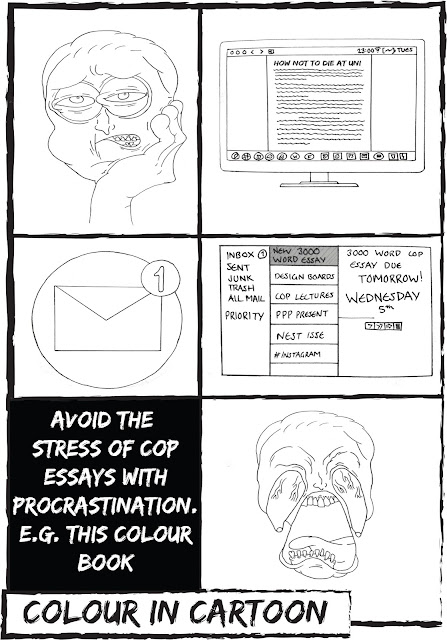As a result of Design Practice, it was possible to
further understand and experiment with new approaches to graphic design. This
included creating a publication design for a competition, exploring traditional
printing methods and collaborative practice. Having experienced this throughout
the module has allowed new ways to produce visual and contextually successful designs
that can be applied to future briefs of a similar nature.
Exploration into the use of type and layout in
previous modules, helped in understanding the approaches to studio brief 1, in
which a book cover design would be made. As a result, the book cover was
explored contextually, to gather initial ideas on ways that the previous
designs communicated to their audiences. Therefore, the version that would be
created during studio brief 1 could take inspiration from previous designs and
utilise the key elements of the book. For example, when researching In Cold
Blood, the characters in the book were shown to be ruthless murderers, which
were then reflected on during the design stages of the project. This allowed
the cover to communicate to the audience that the book would involve the
representation of the killers in this way. Other elements of the cover that
were taken into consideration during the process, were the colour schemes and
the typefaces. By doing so, the book could reflect the themes and settings of
the book. As it was set and released during the 1950s, it was appropriate that
the style would be reflective of the times.
For studio brief 2, beginning an individual
investigation into the events held in Leeds, allowed for several design ideas
to come about. As a result, the Leeds CAMRA Beer & Cider festival could be
explored using traditional print techniques. Having looked into the background
information of the founders, it was possible to communicate the history of the
event in a way that might appeal to a younger audience. After receiving
feedback from peers, it was clear that the design stage would need to look at
ways in which a new audience could be attracted to the event. Therefore, creating
a list of the essential objects for a beer festival would add a humorous twist
to the design. During the production of the designs, new approaches were used
in order to create the outcome. This includes the use of photography for the
essential objects and screen-printing the final design. In terms of the stock
for the final print, the use of paperboard was also necessary in relation to
the context, as it represented the material found in beer mats. After creating
the final print, feedback from peers gave a critical reflection of the things
that had been done well and the things that could be improved. Therefore, the
feedback could be responded to in a way that would allow for future projects to
consider different approaches.
Studio Briefs 3 and 4, both gave the opportunity to
work with other people in a collaborative environment. This allowed for insight
into the ways in which the other members of the group would approach the brief,
as well as feedback on the contributions made to the tasks. This worked well as
new possibilities could then be experimented with both as a group and
individually, once the roles had been assigned to each member. As a result, the
studio briefs gave people further insight into ways in which design teams would
work together in a professional environment.
Overall, the skills learnt during Design Practice
can be revisited and reflected on during the course of level 5. They also
provided an understanding into the ways in which future projects can be
completed, both individually and collaboratively.























